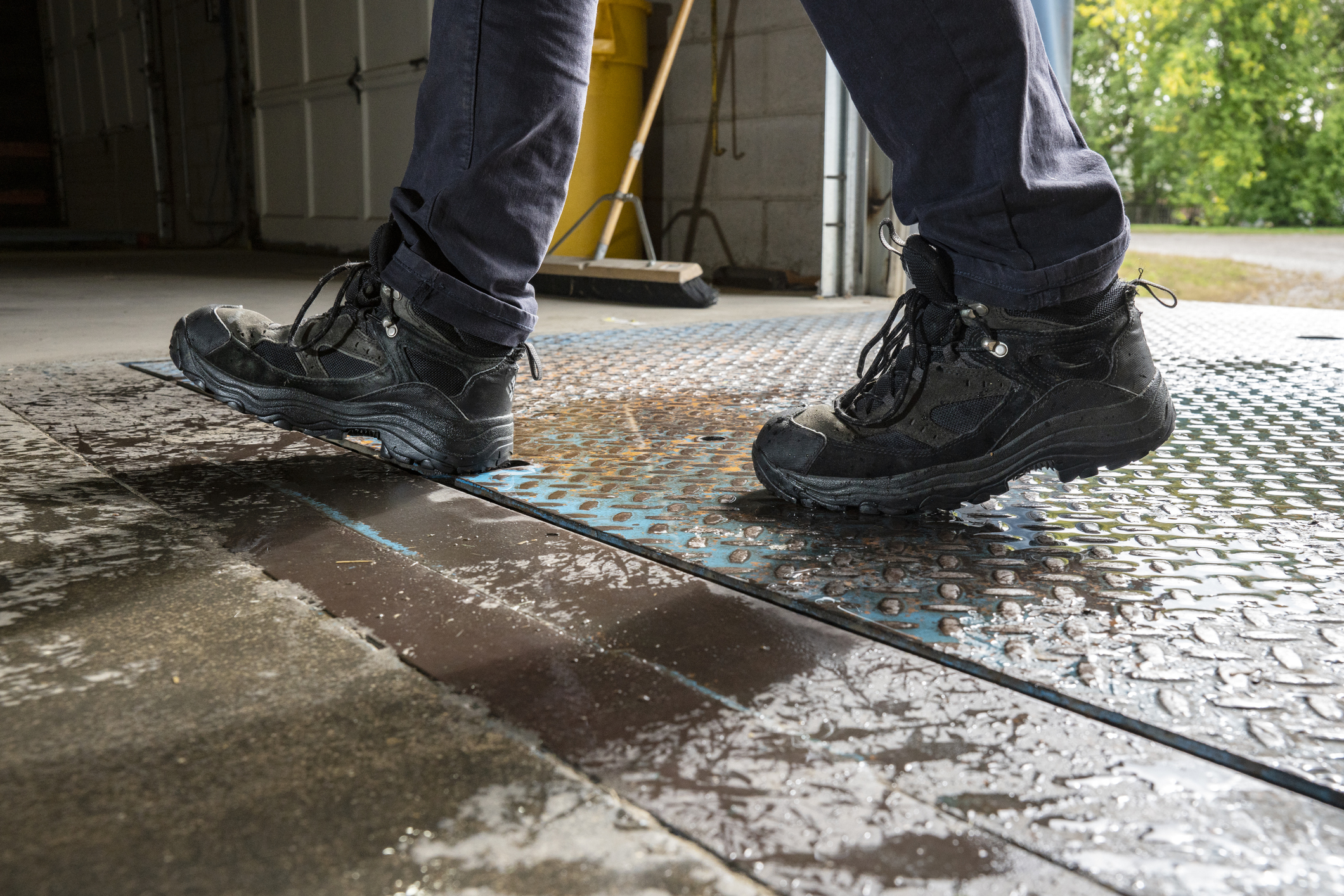The Science Behind Slip, Trip, and Fall Prevention
Slip, trip, and fall claims carry a high frequency, but typically, low severity, with their associated costs totaling over $11 billion annually. Studies focused on surface interactions, in conjunction with human behaviors, may help determine best practices for preventing these incidents.
September 11, 2023

Slipping occurs due to a lack of traction between a foot or shoe sole and the walking surface, but conditions like spills, wet or icy weather elements, or loose rugs or mats are typically common causes of the slip. The science of interacting surfaces in relative motion, known as tribology, can help risk managers understand the importance of proper footwear and floor maintenance, however, there is so much more to account for when understanding why slip, trip, and fall (STF) incidents occur.
“Tribology can get as granular as the direction of the tread to increase traction,” said Sonya Luisoni, Senior Risk Control Manager at Safety National. “Yet, these studies are typically conducted in a lab under a controlled environment, which does not translate into the real world very easily. To understand the full scale of the risk, organizations need a more holistic view that accounts for specifics like age, gender, body mechanics, and health risks.”
Here we examine the types of incidents that happen, and what may cause them outside of tribology practices.
Types of STFs
When examining slips, trips, and falls on the same level (STFL) versus those that occur from heights or stairs, there are several classifications. While the nature of work can vary the types of accidents, these are the most common.
Microslip is a slip shorter than 3 cm and generally goes unnoticed.
Slip is as long as 8-10 cm, resulting in instinctive efforts to regain postural control.
Slide is uncontrolled movement of the heel typically when slip is greater than 10 cm. Likely to lead to a loss of balance and result in a fall.
Trip occurs when the swing phase of the foot is interrupted unexpectedly due to inadequately clearing the ground. Irregularities of as little as 5 mm of walking surface can be sufficient to cause a trip.
Loss of balance can be the result of an unexpected forcible connection with an object or person. It can also occur with forcible movement of the floor itself, as when standing in a moving vehicle.
Stumbling is a consequence of slip, trip or loss of balance and refers to the process of falling and subsequent attempts to regain balance rather than being a triggering event.
Biomechanics Increasing STF Risks
Lab environments are helpful for understanding how footwear tread, floor materials, and weather elements impact traction, but they cannot replicate the myriad of gaits and tasks of an individual. These characteristics that affect the motion of our body, or biomechanics, can severely influence falls and severity.
- Gait: Walking involves a complicated combination of challenging central nervous system (CNS) functions. It is estimated that while walking, 80% of the gait cycle is in a continuous state of instability. The dynamic stability is lost and regained in every gait cycle during normal walking. Recovery from a slip, slide or trip relies on a complex interplay of neural and motor control. There is also a level of expectancy that this natural interplay will keep us safely walking. When the expectation does not meet reality, we interrupt the flow and can end up injured from a slip, slide, or fall injury. That may explain why STFs are more prevalent in older and heavier individuals.
- Work Pace: Increased walking speed reduces dynamic walking stability in part because the faster pace increases the required coefficient of friction (RCOF). If the shoe and floor cannot provide the appropriate friction, there’s a risk of slip, slide or fall. Tripping differs from slipping and sliding in that an object abruptly disturbs the dynamic stability of walking. Recovery from a trip depends on factors such as lower extremity muscular power, ability to restore control of the flexing truck, reaction time, step length and walking speed.
- Load Carrying: Carrying a load can be a major factor contributing to STF injuries. As one would expect, the normal recovery mechanisms we employ to recover from a disturbance have to contend with the additional weight of the load. Often, this correction cannot be accomplished in the split second available before losing control.
For more expertise, guidance or resources on this topic, please contact [email protected].

























